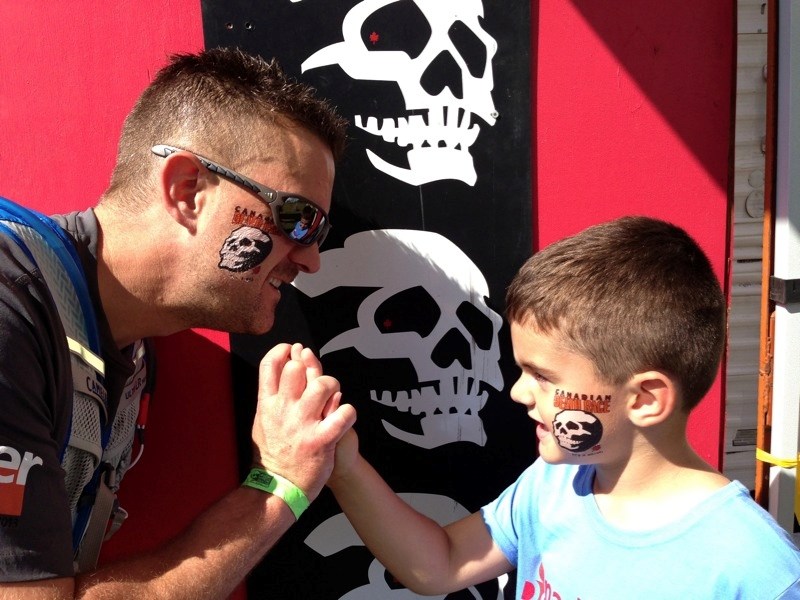Each August long weekend, approximately 1,400 relay team members and solo runners (and, some would argue, masochists) descend on the town of Grande Cache, population 4,000, to participate in the 125-kilometre, 24-hour North Face Canadian Death Race.
This year, two Athabasca-based relay teams tackled the course, which includes 17,000 feet of elevation change, passes over three mountains and crosses a river.
The Tower Road Terror team of four placed 33rd out of 242 teams; the five Meanook Muck Runners placed 97th.
Bud Ottosen, 65, completed the final part of the race — leg five — for the Meanook Muck Runners. Ottosen has run legs of the death race for eight years. He noted the 22-kilometre final leg of the race is generally done in the dark. Even though runners wear lamps — sometimes more than one — Ottosen said the muddy, wet conditions at this year’s event presented additional challenges.
He finished in two hours and 58 minutes.
“It’s the kind of race where finishing is your first objective, and nobody getting hurt,” said Ottosen.
Though the entry fee is $350 per person, there are no big prizes; just a few medals, glass-blown skulls and bragging rights.
The narrow, steep, rocky and root-riddled mountain trails are a far cry from what many local runners might envision when they think of trail running, said Ottosen. The Muskeg Creek trail system is designed for skiers, though runners use it in the summer, and is far more accommodating than any stretch of the death race.
“There’s trails, and then there’s trails, and these are quite tough,” said Ottosen of legs two, four and five in particular, all of which he has run.
Some runners with Athabasca County ties competed on teams that were not strictly locally based, including Sarah Haubrich and Marty Mudryk.
Mudryk, 39, who grew up in Boyle and now lives in Fort Saskatchewan, agreed with Ottosen that just finishing equates to success in the death race. He said you compete against yourself primarily, not the other runners.
“When you get out there, it’s definitely not a competitive atmosphere. It’s more of a camaraderie, not only with your team, but with the other people out there.”
Part of that benevolent spirit comes from the sense that the trail itself can be the enemy. Ottosen noted that on leg two of the race, during a tricky descent for many runners, a massive hail storm struck, and one competitor broke her leg.
“You either went really slow or put yourself at a big, big risk for some kind of fall,” said Ottosen.
Both men run year-round to train — Mudryk tries to run 20 to 30 miles per week, and Ottosen, who is a personal fitness trainer, trains for 1.5 or more hours per day to prep for the death race and other events, including running the Skyline Trail in Jasper.
Mudryk jokes that his training and recovery regimen include “lots of red wine”; Ottosen stresses the importance of training on inclines as much as possible and, in the week leading up to a big race, dialing back the training intensity.
Mudryk agrees that preparing for the sheer steepness of the race — particularly the lengthy descents — is key if one wants to avoid pain in the days following the race.
“There’s about a day period where they say pain is temporary, and that’s a lie — it’s at least three days,” he said of his recovery process.
Both agree the death race is great motivation for people to commit to getting active, and Mudryk said people should not let the “death” part of the title scare them. (Organizers are also quick to point out that despite the macabre name, no one has actually died while running the race during its 13-year existence.)
“Most people, if you want to get active, you need a reason to get active, and that’s a good reason,” Ottosen said of the death race.



